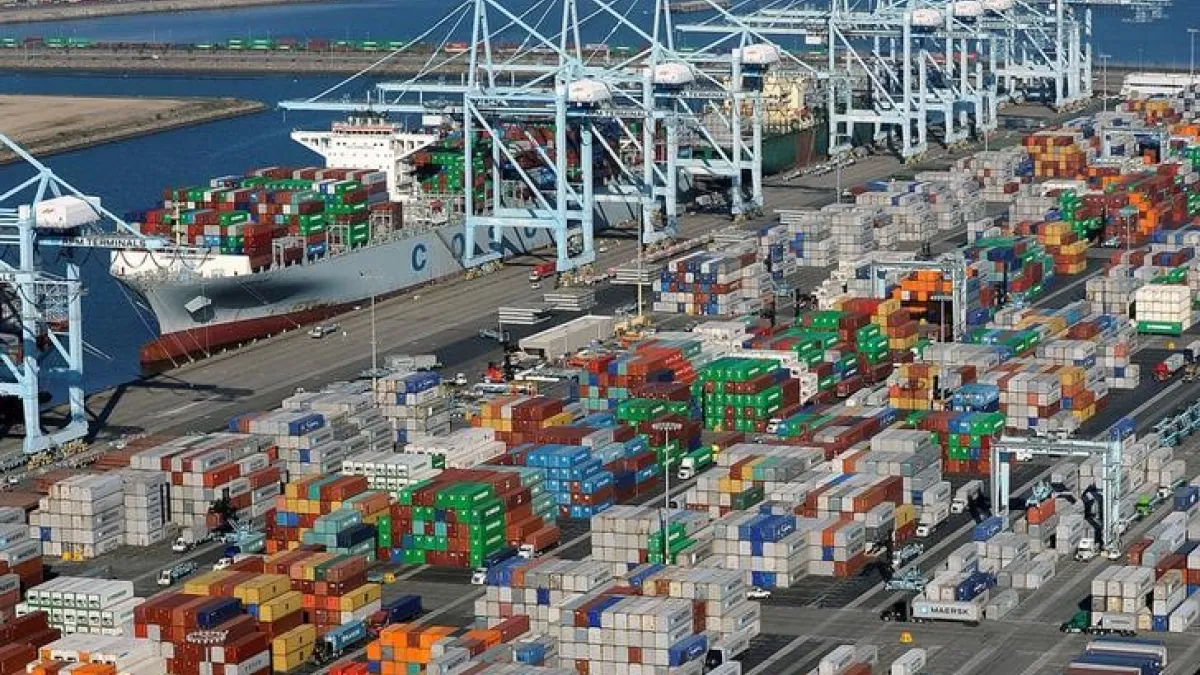
With the U.S. and the European Union agreeing to a trade framework that includes a 15% tariff on goods imported from the EU, American consumers now face an overall effective tariff rate of 18.2%, the highest level since 1934, according to a new analysis by the Yale Budget Lab.
Over time, as importers seek to lower costs by switching to lower-tariff sources, the overall effective tariff rate is projected to fall to 17.3% — which would still be the highest since 1935.
The analysts at Yale estimated that in the short run, the tariffs will reduce household purchasing power by $2,400 a year on average. Over time, that loss settles at about $2,000 per household. The loss of purchasing power occurs through higher prices, with shoes costing 39% more and apparel costing 37% more in the short run, and 18% and 17% more in the long run, respectively.
The tariffs take a bite out of the overall economy, too, with gross domestic product growth registering 0.5 percentage points lower in 2025 and 2026. Over time, the U.S. economy is consistently 0.4 percentage points smaller. Unemployment rises by 0.7 percentage points by the end of next year.
The tariffs produce considerable revenues, though. The Yale researchers estimate that over the 10 years between 2026 and 2035, the tariffs will raise $2.7 trillion. That significant domestic tax has negative dynamic effects, however, and the total expected revenue falls to $2.3 trillion when factoring in the economic feedback effects.
Global economy shrugs it off: For all the potential problems implied by a simmering trade war, many economists are relieved that the tariffs President Donald Trump is imposing on trading partners around the world are not as high as had been threatened. After panicking during the initial announcement of Trump’s new tariff regime in April, many analysts and investors have begun to make their peace with the import taxes, calculating that the global economy can absorb them without too much damage, especially at the more moderate levels now in play.
The International Monetary Fund provided fresh data to support that view Tuesday as it raised its global growth forecast to 3% this year and 3.1% in 2026. In April, the IMF said it expected “a significant slowdown” due to Trump’s trade war and lowered its growth projections to 2.8% for 2025 and 3.0% for 2026.
The IMF also raised its outlook for the U.S., increasing its projected growth rate for 2025 by a tenth of a percentage point, to 1.9%, and three-tenths of a point for 2026, to 2.0%.
The latest estimates are a clear improvement over the forecast provided in April, but they remain below the results and projections recorded last year, before Trump’s trade war injected added uncertainty into the global economy.
Outlook mixed: The costs of Trump’s tariff hikes have been lower than expected, the IMF said, and better financial conditions, along with an increase in government spending, have boosted local and global economies. At the same time, the IMF warned that the costs of the tariffs are not zero, and things could still take a turn for the worse.
“This resilience is welcome, but it is also tenuous,” said IMF Chief Economist Pierre-Olivier Gourinchas. “While the trade shock could turn out to be less severe than initially feared, it is still sizable, and evidence is mounting that it is hurting the global economy.”
Some economists have a gloomier outlook. Analysts at Goldman Sachs warned last week that the global economy is reaching “stall speed.” The analysts expect to see more turbulence in the economy in the months ahead, as companies exhaust the inventories they built up ahead of the tariffs and start replacing them with higher-priced imported goods.
So far, those inventories appear to have played a major role in limiting the negative effects of the tariffs. Once inventories are run down and pricing pressure becomes unavoidable, there is the possibility that price increases could be dispersed throughout the economic chain, limiting damage. For example, one clothing retailer in Indiana told NPR that he hopes the tariff on Chinese imports will be absorbed more or less evenly by manufacturers, wholesalers, retailers and shoppers.
“If you take 30% and cut that into five or six,” the retailer said, “now suddenly it's not quite as dramatic.”
The bottom line: Trump’s tariffs have been less painful than initially feared, but that could change later this year as their full effects play out in the U.S. and global economies.